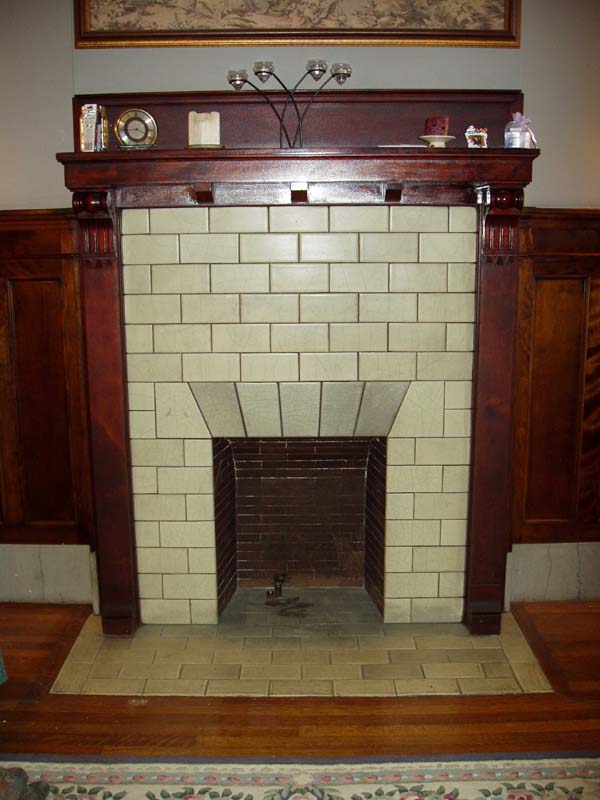with tip-n-slide damper
11/26/06
|
As you can see, the grate (damper) does open both ways, as you indicated: side to side and up and down, but when you push it up to open it, it only opens about 1/2 inch. My problem is that there is a fireplace below it, and I don't want to tear out walls trying to re-do the chimney or run a new gas line. I greatly appreciate your advice in this regard. It is very kind of you to offer to share your expertise with someone who is so far away. Thanks for any advice and suggestions you can give me. What would happen if I tested it and built a small fire? If it worked, how would I know it was safe? We had a chimney sweep look at the chimney and it was totally clean.
Sincerely,
It's a lovely period fireplace in good condition but it almost certainly would smoke if you burned wood in it and it may not be safe or built to code.
About safety and code first: You can read the current code on fireplaces at http://www.rumford.com/code/IRC06.html The things I would look at are wall thickness and clearance from combustibles. The firebox should be at least 8" thick, the hearth 4" thick and no combustibles in contact under the hearth or within 2" of the firebox walls. Chimneys must be lined with clay flue liners and have walls at least 4" thick and 2" clear of combustibles. Many old houses had chimney built in contact with combustible framing but still may be safe if they are massive enough or thick enough. See article at http://www.rumford.com/certification/firesafety.html
Perhaps you can tell by the construction that the firebox walls and hearth are plenty thick enough, but I do warn you that many fireplaces built in the first two decades of the 20th century were not safely built for wood-burning. Gas fireplaces had been the rule since about 1890, a return to the popularity of wood-burning was just beginning, most masons had no idea how to build a fireplace and modern codes were just developing. When I was doing this sort of work I learned to be radical and remove the old firebox and hearth to make sure there were no combustibles and start with a new 4" thick concrete hearth base with no combustible forms left underneath. This was after one of my customers set fire to the framing under the hearth extension because the tile hearth, which five or six inches thick, was filled with wood lath scrap wood mixed in with the plaster.
The next issue will be that the fireplace smokes. It may draw, as you say, with a little piece of paper - meaning only that the chimney is clear and tall enough - but a 4" diameter flue is not nearly big enough. You will need a flue at least 8" in diameter or an 8"x12" clay flue. Also the damper in your fireplace is too low and the rounded fireback will surely kick smoke out into the room. See the way modern fireplaces work at http://www.rumford.com/certification/design.html#rumod
I think you have two choices:
1) Rebuild the fireplace as a Rumford fireplace with a new 8" diameter flue. You may find an adjacent flue - maybe one that originally vented a coal furnace - that you could line with an 8" stainless steel flue liner. Rebuilding would allow you to verify the construction and be sure it's safe. You might be able to do the work entirely through the firebox opening although I would look into removing and resetting the tile surround as that would be much easier. See some examples of this sort of work at http://www.rumford.com/victorian.html
2) Accept that it's a gas fireplace. There are small period-looking vent free gas fireplaces on line at places like the Victorian Fireplace Shoppe at http://www.gascoals.net/Accessories/GasCoalBaskets/tabid/407/Default.aspx But be careful. The appliance must be listed and probably listed as vent free. The National Fuel Gas Code requires all non listed gas log sets to be installed only in code-compliant solid fuel-burning fireplaces.
Hope this helps.
Best,
Jim Buckley
|

Buckley Rumford Fireplaces
Copyright 1996 - 2005 Jim Buckley
All rights reserved.
webmaster

